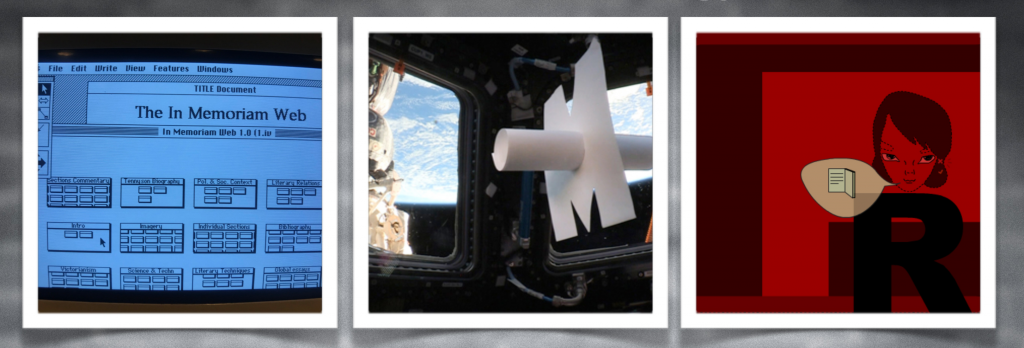
Natural Language
January 4, 2019
School of the Art Institute of Chicago
37 S. Wabash, Room 327, Chicago, IL
Reception at 6:30; Readings & Performances at 7:30
Emcees: Judd Morrissey & Dene Grigar
In conjunction with the 2019 MLA conference, the Electronic Literature Organization and the Art & Technology Studies (ATS) department at the School of the Art Institute of Chicago (SAIC) will host an evening of readings, performances, and screenings of electronic writing and poetic technologies. The event will include a reception to celebrate N. Katherine Hayles and the impact of her NEH summer seminars while also marking the 50th year of Art & Technology Studies and its history of poetic media and invention.
Performances/Readings/Screenings by:
1. Brad Gallagher, “After Life,” a live sound and generative text piece using the language of John Ashbery. A sequence of looped overtone singing phrases are used to trigger the sampling of a Markov chain based on John Ashbery’s writing, creating a unique text from his corpus with each performance. As successive root tones are added to the loop, deeper and deeper levels of the Markov chain are explored. “After life,” is an exploration of the balance between the control and lack of control one has with their language and a reflection on how it continues to evolve after the author is gone.
2. Wanbli Gamache, “Palimpsest and the Mirror,” a performance that utilizes concepts of body and presence with augmented reality uses spacial texts that provides a system of understanding orientation and progression of the performers trans* identity. The concepts of the built upon language and physicality of performer and audience is excavated through the mechanism of the mirror.
3. Dene Grigar, “Grace and Her Garden,” a tale of a woman, roses, and a rattlesnake.
4. Eduardo Kac, “Reversed Mirror,” his digital poem published in 1997.
5. Margie Luesebrink, Riding the Rust Belt, by M. D. Coverley and Eric Luesebrink, is one in a series of (hyper)videos that comprise the “Legends of Michigami” project. The videos map the routes of trains along the shores of Lake Michigan. These works trace a drama of the western Great Lakes – stories revealed in place and landscape. The persistent motion of the train is metaphoric for time passing whether we want it so or not – for the way human beings (in the name of progress or circumstance) are swept up in inevitable social and economic shifts.
6. Judd Morrissey (Anatomical Theatres of Mixed Reality, ATOM-r), “Foramen,” an augmented reality poem with Justin Deschamps (Performer) and Mark Jeffery (Performer/ Choreographer). Includes materials developed collaboratively with Abraham Avnisan.
7. Alex Saum, “As We May Think,” a bilingual online video essay on representational digital media and their asynchronous relation with the way we think and see the world. It’s part of Alex Saum’s larger #YouTubers poetic series, where she explores early YouTube confessional videos and today’s influencers’ speech, seeing the corporate online video giant in terms of web visibility and discourse.
8. Stephanie Strickland, Hours of the Night; Addressing age and aging, sleep and the night, this poem was written to be read in PowerPoint. We wanted to make use of a widely available and easily managed platform that anyone could write for. We believed PowerPoint to be a popular, standard authoring system producing files readable on any desktop computer, tablet, or smart phone. Only true, it turns out, when they are converted to MP4 format. Be sure to enable audio. Video online at http://hyperrhiz.io/hyperrhiz17/gallery/2-luesebrink-strickland-hours.html.